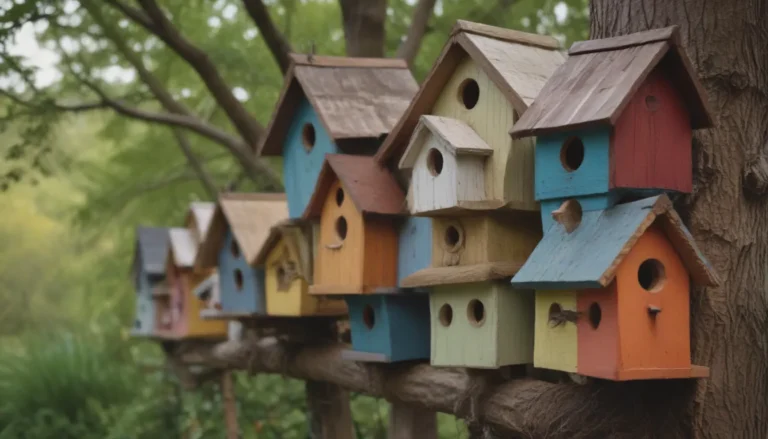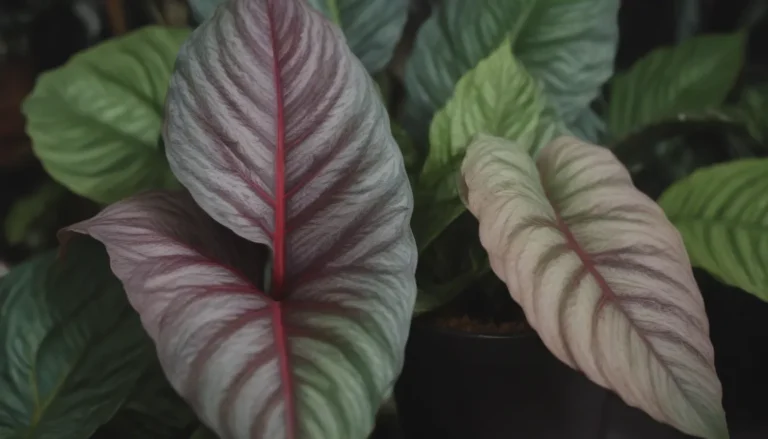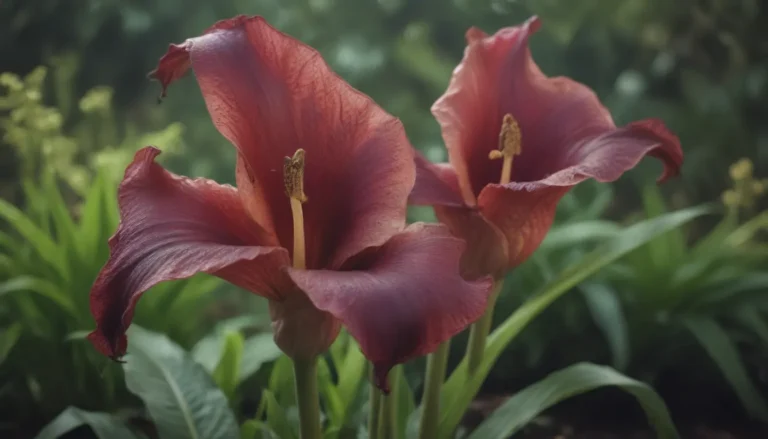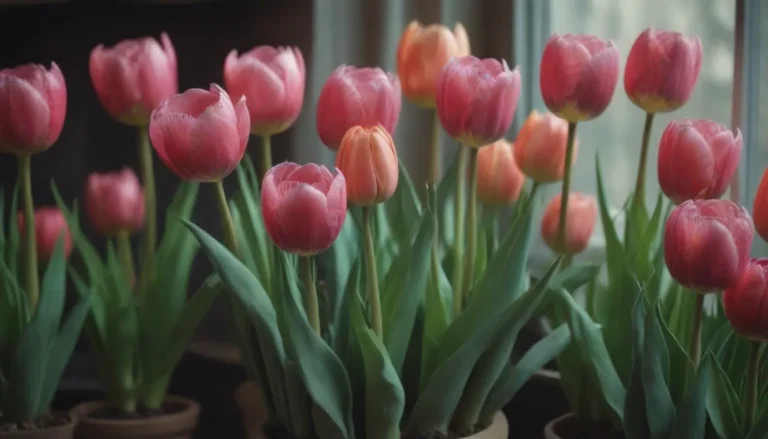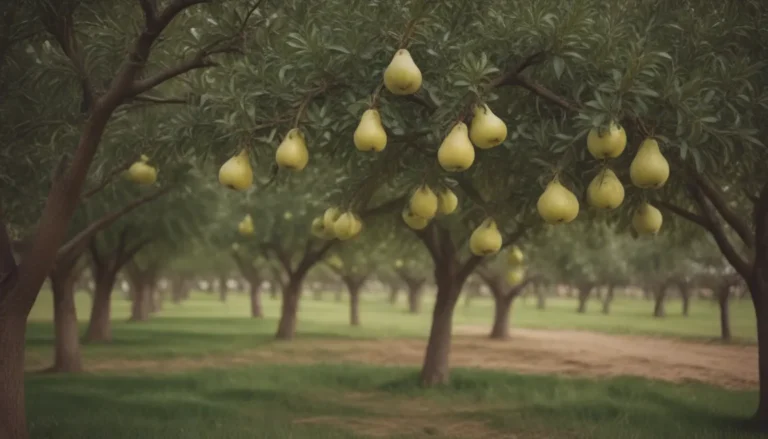A Comprehensive Guide to Deer-Resistant Perennials and Herbs
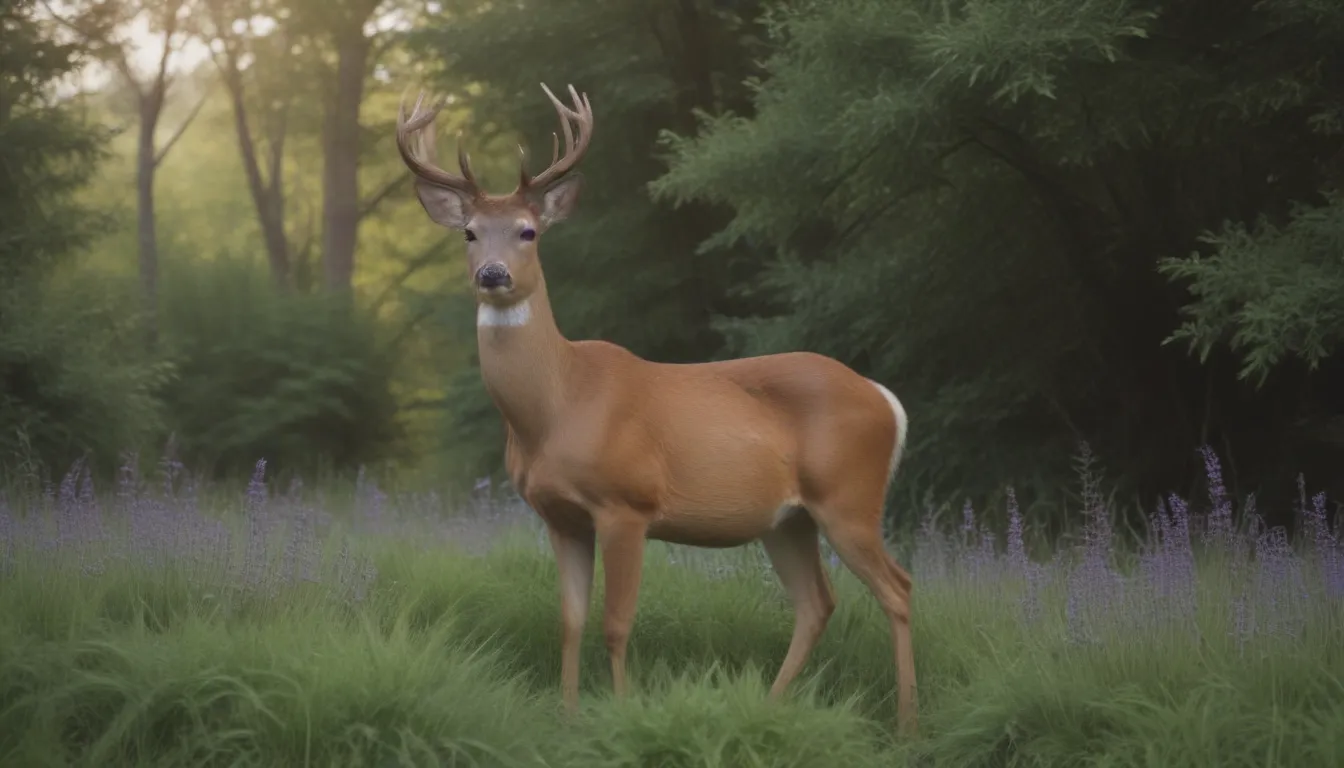
Do you find yourself frustrated by deer nibbling on your beloved plants in the garden? Fear not! There is a solution – planting deer-resistant perennials and herbs will significantly reduce the chances of your precious plants becoming a deer snack. In this in-depth guide, we will explore 32 hardy and deer-resistant plants that will not only add color to your yard but also keep pesky deer at bay.
Understanding Deer-Resistant Plants
Deer-resistant plants are those that deer typically avoid due to factors such as toxicity, strong smells, or unpalatable tastes. While no plant is 100% deer-proof (especially when deer are starving), choosing deer-resistant perennials can help protect your garden from unwanted pest damage. Some popular deer-resistant perennials and herbs include:
- Catmint and Catnip
- English Lavender
- Sage
- Russian Sage
- Lungwort
- Speedwell
- Common Bleeding Hearts
- Fringed Bleeding Hearts
- Dutchman’s Breeches
- Yellow Alyssum
- Foxglove
- Salvia
- Bearded Iris
- Lamb’s Ear
- Lenten Rose
- Peony
- Oriental Poppy
- Jack Frost Bugloss
- Columbine
- Columbine Meadow Rue
- Rose Campion
- Larkspur
- Daffodil
- Forget-Me-Not
- Tickseed
- Coneflower
- Rodgers Flower
- Sneezeweed
- Yarrow
- Bee Balm
- Bog Onion
- Wall Germander
Plant Profiles: Deer-Resistant Perennials and Herbs
Catmint and Catnip (Nepeta spp.)
Catnip, a member of the Nepeta genus, is a well-known herb that attracts cats but repels deer due to its strong scent. Other catmint plants in the Nepeta genus also deter deer and are hardy enough for gardens in zones 3 and 4.
- USDA Growing Zones: Varies
- Sun Exposure: Full sun
- Soil Needs: Well-draining soil
English Lavender (Lavandula angustifolia)
English Lavender is prized for its aromatic flowers that repel deer and ants. It blooms in mid-summer and is hardy to zone 5. In warmer climates, consider growing Spanish or French lavender.
- USDA Growing Zones: Zone 5
- Sun Exposure: Full sun
- Soil Needs: Well-draining soil
Sage (Salvia officinalis)
Common garden sage is a culinary herb that also serves as a deer-resistant perennial. With variegated leaves and violet blooms, it adds both beauty and functionality to the garden.
- USDA Growing Zones: Varies
- Sun Exposure: Full sun
- Soil Needs: Well-draining soil
Russian Sage (Perovskia atriplicifolia)
Despite its name, Russian sage is not a true sage plant. It boasts silvery-green foliage and lavender flowers that bloom in late summer, providing a colorful display when other plants have finished flowering.
- USDA Growing Zones: Varies
- Sun Exposure: Full sun
- Soil Needs: Well-draining soil
Lungwort (Pulmonaria officinalis)
Known for its speckled foliage and pink and blue flowers, Lungwort is a shade-loving plant that blooms early in spring, making it a great addition to woodland gardens.
- USDA Growing Zones: Varies
- Sun Exposure: Part to full shade
- Soil Needs: Moist, well-draining soil
Speedwell (Veronica spp.)
Speedwell is a long-blooming perennial with blue flowers that can last throughout the growing season with proper care. ‘Royal Candles’ is a popular cultivar suited for zones 3 and 4.
- USDA Growing Zones: Varies
- Sun Exposure: Full sun to part shade
- Soil Needs: Well-draining soil
Common Bleeding Hearts (Lamprocapnos spectabilis)
Common Bleeding Hearts are shade-loving perennials with uniquely shaped flowers that thrive in partial shade. They are perfect for adding interest to shaded areas of the garden.
- USDA Growing Zones: Varies
- Sun Exposure: Part shade to full shade
- Soil Needs: Moist, well-draining soil
Fringed Bleeding Hearts (Dicentra eximia)
A smaller alternative to common Bleeding Hearts, Fringed Bleeding Hearts offer attractive fern-like foliage that lasts through summer heat. They are hardy and suited to zones 3 and 4.
- USDA Growing Zones: Varies
- Sun Exposure: Part shade to full shade
- Soil Needs: Well-draining soil
Dutchman’s Breeches (Dicentra cucullaria)
Dutchman’s Breeches feature unique, short-lived flowers that disappear quickly after blooming. They are great for zones 3 and 4 and add a touch of whimsy to the garden.
- USDA Growing Zones: Varies
- Sun Exposure: Part shade to full shade
- Soil Needs: Well-draining soil
Yellow Alyssum (Aurinia saxatilis)
Also known as “Basket of Gold,” Yellow Alyssum offers vibrant yellow flowers that create a stunning display in spring. Its mat-forming growth habit makes it an excellent ground cover.
- USDA Growing Zones: Zones 3 and 4
- Sun Exposure: Full sun
- Soil Needs: Well-draining soil
Foxglove (Digitalis purpurea)
Foxglove is a toxic plant that deer avoid due to its poisonous properties. With tall, slender flowers in various colors, Foxglove adds a bold statement to the garden.
- USDA Growing Zones: Varies
- Sun Exposure: Part shade to full shade
- Soil Needs: Well-draining soil
Salvia (Salvia spp.)
Hardy perennial Salvias are prized for their blue/purple flowers and deer-resistant properties. With a range of species and cultivars available, there is a Salvia variety for every garden.
- USDA Growing Zones: Varies
- Sun Exposure: Full sun
- Soil Needs: Well-draining soil
Bearded Iris (Iris germanica)
Bearded Iris plants offer fragrant flowers in a rainbow of colors, making them a popular choice for deer-resistant gardens. Their resilience to deer makes them an excellent option for zones 3 and 4.
- USDA Growing Zones: Zones 3 and 4
- Sun Exposure: Full sun
- Soil Needs: Well-draining soil
Lamb’s Ear (Stachys byzantina)
Lamb’s Ear is a deer-resistant perennial known for its soft, velvety leaves that deter deer. Its drought-tolerant nature and spreading growth habit make it an ideal ground cover plant.
- USDA Growing Zones: Varies
- Sun Exposure: Full sun to part shade
- Soil Needs: Well-draining soil
Lenten Rose (Helleborus orientalis)
Lenten Rose is a shade-loving perennial that blooms early in the season, providing much-needed color after the winter months. Its long-lasting blooms and unique sepals make it a standout in any garden.
- USDA Growing Zones: Varies
- Sun Exposure: Part shade to full shade
- Soil Needs: Moist, well-draining soil
Peony (Paeonia lactiflora)
Peonies are beloved for their large, fragrant flowers that bloom in spring. These long-lived perennials are deer-resistant and thrive in various growing conditions, making them a must-have for any garden.
- USDA Growing Zones: Varies
- Sun Exposure: Full sun to part shade
- Soil Needs: Well-draining soil
Oriental Poppy (Papaver orientale)
Oriental Poppies offer large, colorful blooms with a crepe paper-like texture that adds a touch of elegance to the garden. Their toxic properties make them deer-resistant and suitable for zones 3 and 4.
- USDA Growing Zones: Zones 3 and 4
- Sun Exposure: Full sun
- Soil Needs: Well-draining soil
Jack Frost Bugloss (Brunnera macrophylla ‘Jack Frost’)
Jack Frost Bugloss is valued for its striking variegated leaves and small blue flowers. Ideal for zones 3 and 4, this plant thrives in shade and provides reliable foliage interest throughout the season.
- USDA Growing Zones: Zones 3 and 4
- Sun Exposure: Part shade to full shade
- Soil Needs: Well-draining soil
Columbine (Aquilegia spp.)
Columbine plants feature colorful flowers and clover-like foliage that attract bees, butterflies, and hummingbirds. With their deer-resistant nature and hardy properties, Columbines are a great choice for zones 3 and 4.
- USDA Growing Zones: Varies
- Sun Exposure: Part shade to full shade
- Soil Needs: Moist, well-draining soil
Columbine Meadow Rue (Thalictrum aquilegifolium)
Columbine Meadow Rue offers columbine-like leaves and colorful flowers in white, purple, or mauve shades. Its tall growth habit and shade tolerance make it a fantastic option for woodland gardens.
- USDA Growing Zones: Varies
- Sun Exposure: Part shade to full shade
- Soil Needs: Moist, well-draining soil
Rose Campion (Lychnis coronaria)
Rose Campion features silver foliage and vibrant rose-magenta flowers that bloom in late spring. This long-blooming perennial spreads easily, making it an ideal choice for gardeners seeking a colorful ground cover.
- USDA Growing Zones: Varies
- Sun Exposure: Full sun
- Soil Needs: Well-draining soil
Larkspur (Delphinium spp.)
Larkspur is a classic cottage garden favorite with stunning blue flowers and tall flower stalks that add vertical interest to the garden. While short-lived, Larkspur’s beauty makes it a must-have for zones 3 and 4.
- USDA Growing Zones: Varies
- Sun Exposure: Full sun
- Soil Needs: Well-draining soil
Daffodil (Narcissus)
Daffodils are hardy bulb plants that deer and other pests tend to avoid. With a range of colors and bi-colored varieties available, Daffodils are excellent choices for early spring color and reliable blooms year after year.
- USDA Growing Zones: Zones 3 and 4
- Sun Exposure: Full sun to part shade
- Soil Needs: Well-draining soil
Forget-Me-Not (Myosotis sylvatica)
Forget-Me-Nots are fast-growing perennials with tiny blossoms in various colors that provide a pop of color in spring and summer. Their hardiness and deer-resistance make them perfect for zones 3 and 4.
- USDA Growing Zones: Zones 3 and 4
- Sun Exposure: Part shade to full shade
- Soil Needs: Moist, well-draining soil
Tickseed (Coreopsis spp.)
Tickseed is a long-blooming perennial with daisy-like flowers in a range of colors. Regular deadheading can extend the bloom period, making Tickseed a colorful addition to the garden from early summer to fall.
- USDA Growing Zones: Varies
- Sun Exposure: Full sun
- Soil Needs: Well-draining soil
Coneflower (Echinacea spp.)
Coneflowers are known for their vibrant, daisy-like flowers that attract birds and butterflies throughout the summer. With a range of colors and cultivars available, Coneflowers add beauty and biodiversity to any garden.
- USDA Growing Zones: Varies
- Sun Exposure: Full sun
- Soil Needs: Well-draining soil
Rodgers Flower (Rodgersia pinnata)
Rodgers Flower is a versatile perennial that thrives in shade, wet areas, and as a foliage plant. With large plumes of flowers in June and July, Rodgers Flower adds unique texture and interest to shady garden areas.
- USDA Growing Zones: Varies
- Sun Exposure: Part shade to full shade
- Soil Needs: Moist, well-draining soil
Sneezeweed (Helenium autumnale)
Sneezeweed is a late-blooming perennial that provides a burst of color from late summer to the first fall frosts. With its tall growth habit and hardiness to zone 3, Sneezeweed offers a reliable source of color in late-season gardens.
- USDA Growing Zones: Zone 3
- Sun Exposure: Full sun
- Soil Needs: Well-draining soil
Yarrow (Achillea millefolium)
Yarrow is a long-blooming perennial with feathery foliage and flat flower clusters in a range of colors. Perfect for zones 3 and 4, Yarrow attracts butterflies and adds fragrance and texture to the garden.
- USDA Growing Zones: Zones 3 and 4
- Sun Exposure: Full sun
- Soil Needs: Well-draining soil
Bee Balm (Monarda didyma)
Bee Balm is an extra-hardy perennial that attracts birds, bees, and butterflies with its brightly colored flowers. With a long blooming period and deer-resistant properties, Bee Balm is a valuable addition to any garden.
- USDA Growing Zones: Varies
- Sun Exposure: Full sun to part shade
- Soil Needs: Moist, well-draining soil
Bog Onion (Arisaema triphyllum)
Bog Onion, also known as Jack-in-the-Pulpit, is a unique plant with unusual flowers housed in a hood-like structure. Ideal for shade gardens and deer-prone areas, Bog Onion adds a touch of whimsy and charm to any landscape.
- USDA Growing Zones: Varies
- Sun Exposure: Part shade to full shade
- Soil Needs: Moist, well-draining soil
Wall Germander (Teucrium chamaedrys)
Wall Germander is a deer-resistant perennial herb that excels in formal landscapes, thanks to its ability to form living edging in knot gardens. With lavender or purple flowers that attract bees, Wall Germander offers both beauty and functionality in the garden.
- USDA Growing Zones: Zones 5 to 9
- Sun Exposure: Full sun
- Soil Needs: Well-draining soil
Tips and Tricks for a Deer-Resistant Garden
While planting deer-resistant perennials is a great step towards protecting your garden, here are a few additional tips to keep deer at bay:
- Plant in Groups: Deer are less likely to nibble on plants that are clustered together rather than spread out.
- Use Physical Barriers: Fencing, netting, and motion-activated sprinklers can deter deer from entering your garden.
- Interplant with Deer-Repellent Herbs: Herbs like rosemary, thyme, and mint have strong scents that deer dislike, providing further protection for your garden.
- Regularly Monitor and Maintain: Check for signs of deer activity and promptly remove any damaged plants to prevent further destruction.
By incorporating these tips and selecting deer-resistant perennials and herbs, you can create a beautiful and pest-resistant garden that will thrive throughout the seasons.
Conclusion
Creating a deer-resistant garden is not only achievable but also rewarding. By selecting from a diverse range of hardy and beautiful perennials and herbs, you can enjoy a colorful and thriving garden while keeping deer at a safe distance. Whether you prefer fragrant lavender, vibrant peonies, or unique Columbine plants, there is a deer-resistant option for every garden style and preference. So, roll up your sleeves, grab your gardening gloves, and start planning your deer-resistant garden oasis today! Happy gardening!
